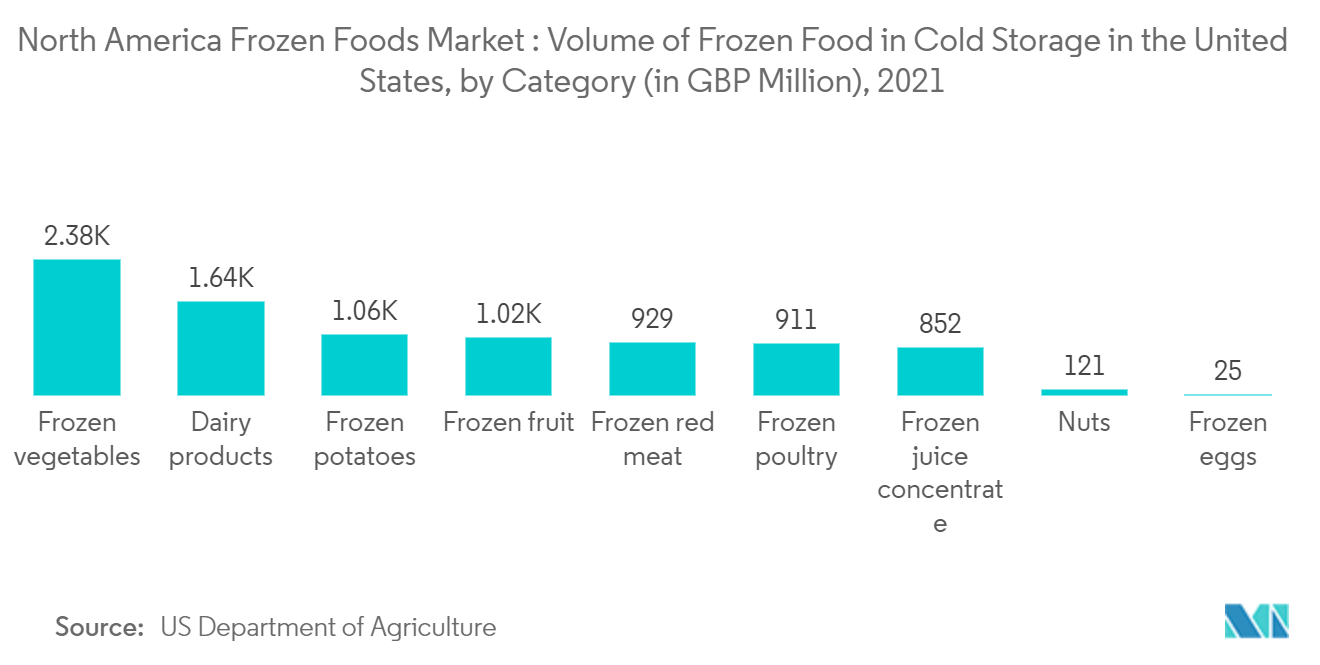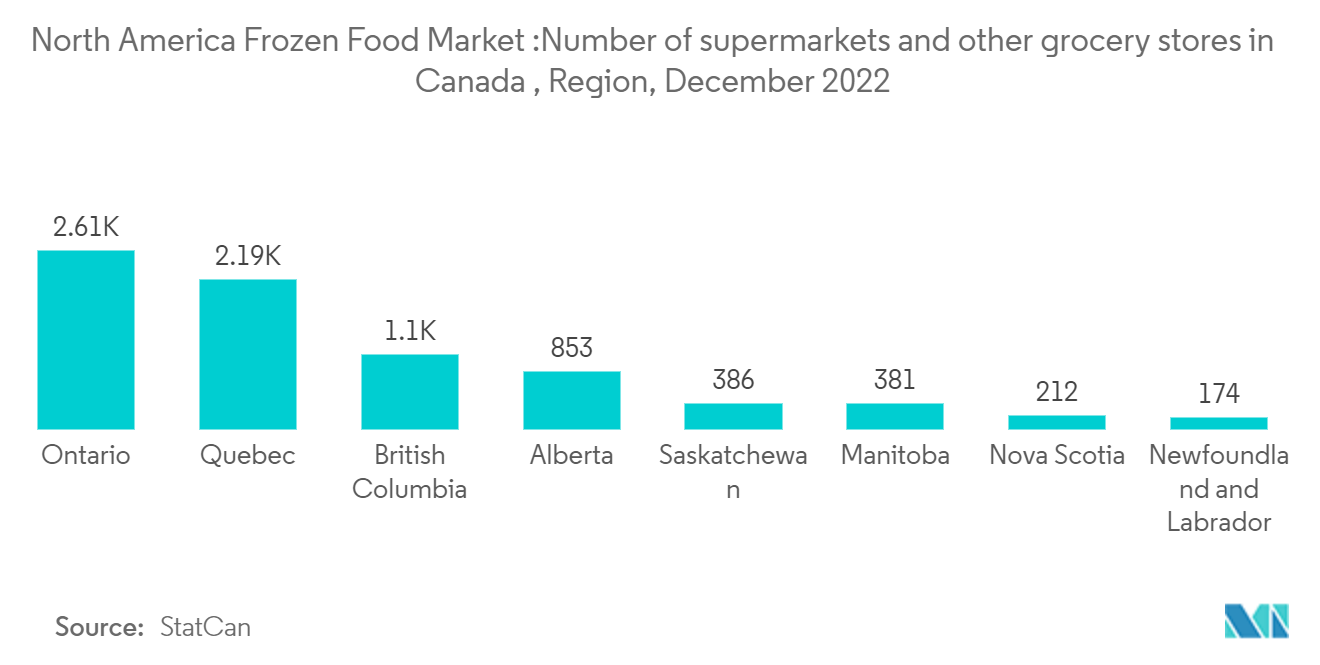Market Trends of North America Frozen Food Industry
Rising Consumer Expenditure On Convenience Food Products
The market is primarily driven by rising expenditure on food and beverage, introducing products with longer shelf life, increasing impulse purchasing, and growing demand for convenience foods that can be prepared quickly due to a shortage of available time. These factors have resulted in the need to stockpile eatables in houses that lasted longer without spoilage, further increasing frozen food sales. For instance, in February 2021, the American Frozen Food Institute (AFFI) reported that the sales of frozen meals such as seafood and poultry were 21.0% higher than in the year 2019, with double-digit sales of all types of frigid/chilled meals. Due to the rise in the economy, growing working-class population, and evolved consumer lifestyle, a notable rise is observed in the expenditure for convenience food products, such as frozen foods, across the United States.Also, younger consumers with disposable incomes are more likely to try new products (many of which are convenient food products) and have non-traditional eating habits. In addition, they eat out more often, burying the demand for frozen food snacks/meals across the country.
In addition, manufacturers are also catering to the increasing vegan population in the region. By introducing plant-based frozen foods to cater to consumer demand and increase their sales. For instance, in February 2022, Zoglas introduced a new Classic plant-based ready meal that can be sold with 21 days shelf life or a frozen ready meal entree with nine months shelf life. The variants available in ready meals are Plant-based Spaghetti & Meatballs, Plant-based Meat Lasagna, Plant-based Butter Chicken, Plant-based Chicken Parmesan, Plant-based Slappy Joe Jalapeno Mac & Cheese, and Plant-based Shepherd's Pie. North American consumers prefer greater convenience and on-the-go food and the trend is inclined toward smaller and more frequent meals. As breakfast is considered an important meal of the day, consumers are highly interested in tasting different types of frozen food meals breakfast, which saves time. In Mexico, frozen Mexican food including frozen taquitos, frozen burritos, and frozen Mexican dinners is witnessing enhanced demand. The sales of frozen foods are rising as consumers opt to save time and opt for products with a specific health focus. Niche products and plant-based products are appearing in the frozen-food meals segment to fulfill the demand.

Supermarkets/Hypermarkets Segment Is Expected To Dominate The Market
The demand for ready-packed, easy-to-cook, and ready-to-eat products is expected to increase over the forecast period, which is going to boost the North American frozen food market The American consumers prefer greater convenience and on-the-go food and the trend is inclined toward smaller and more frequent meals. Frozen foods are now on display in the first row in the supermarkets and hypermarkets in the region. Owing to fast-paced lifestyles and the need for a quick meal or snack among adults.
In supermarkets/hypermarkets, frozen-food meals are available in a wide range with a variety of ingredients and flavors in different packaging styles. This further attracts consumers to supermarkets and hypermarkets, driving the net sale in the market. For instance, Walmart offers different types of ready meals, including chicken alfredo, chicken breast, mashed potato, spaghetti, and meat sauce, under the brand Hormel. In addition, Hormel offers ready meals in a microwave tray. The ready meal in the tray can be heated in the microwave for a minute and consumed with no preparation time.
In addition, different supermarket and hypermarket chains like Walmart and Kroger offer different loyalty benefits to retain consumers. For instance, Kroger Co. offers a family loyalty program to its customers. Using the Shopper's card, the customer can earn one fuel point for every USD 1 spent in the supermarket. Due to such factors, the market for frozen foods is on the rise. Also, due to a huge retail space catering to a wide variety of preferences, the supermarkets/ hypermarkets segment is a dominant channel for sales of frozen food in the region.



